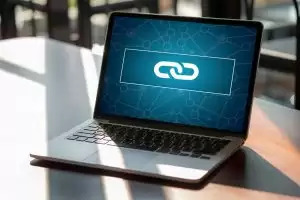SEO is critical for eCommerce: organic search is the largest channel for traffic and revenue. In the spirit of the holiday season, we’ve hand-picked five great eCommerce SEO tips and wrapped them up in a bow, so you can ring in the new year with more search visibility. Optimal eCommerce SEO will translate into more traffic and revenue and a good bounce rate.
1. Discover and rank for your target keywords
If you’re not ranking for your target market’s keywords, you’re most likely missing sales from lost Web traffic. Check out this article on the 7 Things You Must Do to Rank for Your Keywords for step-by-step guides on discovering and ranking for your best target keywords.
2. Don’t forget on-page optimization
There are several elements to consider for on-page optimization from keywords to social media. Let’s take a closer look at each:
Keyword Optimization
We’ve identified several crucial elements of your site’s pages that should be optimized for keywords. (For a more detailed explanation of the terms discussed below, refer to part one of our basic SEO concepts).
- Meta Titles and Descriptions: Also known as Meta data, inform the search engines what Web pages are about overall. The Meta title is the clickable listing in the search engine results pages (SERPs), and the Meta description is the text that follows. Clearly, both the Meta title and description should be unique to each page and optimized with the page’s primary keywords to capture search share. The text should also be compelling and well written.
- Header tags: These function on a page of content to break up important sections of the content in a user-friendly and search-friendly way. When used well, headers help format the content in a way the search engines can crawl and understand with ease. As a best practice, include at least one of the page’s primary keywords in the H1 and in other header tags throughout the page to reinforce the topic to the search engines.
- Paragraph copy: Copy is the actual on-page text. Even though your site is geared to eCommerce, this doesn’t mean you should exclude content where it is useful and appropriate for the shopper. Search engines read and index sites via text, so feeding them the content they crave is strongly recommended.
Optimize site structure
Are the sections of your site appropriately themed? Meaning, based on your keyword research, is your site’s content organized well for both users to navigate across and search engines to deem relevant for a particular subject matter?
Creating a well-structured website defined by content and organized around keyword research helps search engines in indexing your site’s content. The easier it is for search engines to understand that your site is about a particular subject matter, the more relevant you can become for a query.
A well organized, optimized website also helps visitors navigate it more easily to find the products they’re seeking.
 Internal linking
Internal linking
An integral part of an optimized site structure is internal linking. Search engine robots crawl the Web via links. Providing your website with a solid framework of internal links that logically lead from one page to another helps search engines in understanding the overall theme. Internal links also assist visitors with navigating your site – where do you want them to go next?
Part of an optimized internal linking strategy is using keywords where appropriate in the anchor text – the clickable words used in a link. You can read more on how to best approach internal linking and anchor text in Part 1 of basic SEO concepts (linked above).
Usability
Aligned with both optimized site structure and internal linking is usability. Essentially, usability refers to the ease with which visitors to your site can navigate it to find the information they’re seeking.
Besides making your site easy to navigate, you can increase conversions with a clear call to action (CTA) that facilitates purchases: don’t hide your sales pages or make it a complicated process for people to buy.
A second critical consideration when optimizing for usability is the growing trend toward mobile, as discussed by BrightEdge CEO Jim Yu at Search Engine Watch. Configuring your website for a mobile-friendly user experience will assist consumers in their shopping and purchase decisions.
Social media integration
There is no doubt that social media influences the search results. Optimizing your site’s content by integrating it with social media campaigns is a smart strategy that can help with your site’s rankings and thereby, eCommerce sales.
When considering your social media integration strategy it’s important to keep in mind the appropriate target audience. One size does not fit all: for some eCommerce businesses, especially those heavy with images, Pinterest may be the best social platform. For others, it may well be Google+ or LinkedIn.
3. Avoid duplicate content and use compelling product descriptions
Product descriptions are very important for eCommerce SEO and should be informed and optimized by your keyword research. Replicating the manufacturers’ descriptions is a common mistake among eCommerce businesses, resulting in duplicate content (which may invite a Google penalty).
A second common, inadvertent source of duplicate content is from repeating Meta titles and descriptions for different Web pages. As emphasized above, it is imperative to create a Meta title and description that is unique to each page of your site.
Generic product descriptions also do little for conversions. Adding details – “warm,” “soft,” “cozy,” “comfortable” – that appeal to your readers’ senses can boost sales. In short, detailed and descriptive product descriptions start with unique Meta information and end with compelling marketing and advertising copy.
 4. Optimize product images
4. Optimize product images
When using product images, you’ll want to include image file names and optimized alt text (corresponding descriptions) to inform the search engines of what the image depicts. As discussed in part 1 of our basic SEO concepts, image file names are simple titles that accurately summarize the image’s content, while alt text describes the image in more detail.
Including image file names and alt text helps search engines understand them, as it's currently unclear whether or not Google bot has the ability to read imagery. Image file names also help to explain images to visitors with visual impairments who use screen-reading functionality. Image optimization is a very important part of eCommerce SEO. You'll also want to consider image weight and loading speed. If an image takes too long to load because it's heavy, your page load time will decrease and possibly cause Google to penalize your site. Most SEOs avoid rasterized images.
5. Boost eCommerce SEO - enable reviews and ratings for your products
Finally, enabling reviews and ratings for your products can give your eCommerce business the competitive edge.
A great way to accomplish this is to employ schema on your site’s content – and especially, its key product pages. While it sounds highly technical, Schema is really just a system of code that your Web development team can readily implement that helps search engines better interpret your site’s content.
With schema, search engines can display your Web pages in the search results with richer snippets that even include thumbnail images, reviews and ratings. These rich results are far more compelling – and more likely to be selected by shoppers – than generic SERP listings, giving you the competitive edge. Schema should be one of the first things to consider when doing eCommerce SEO.
So don’t waste another moment! You can readily implement these five tips so this is the year eCommerce SEO increases your organic search traffic and revenue.


